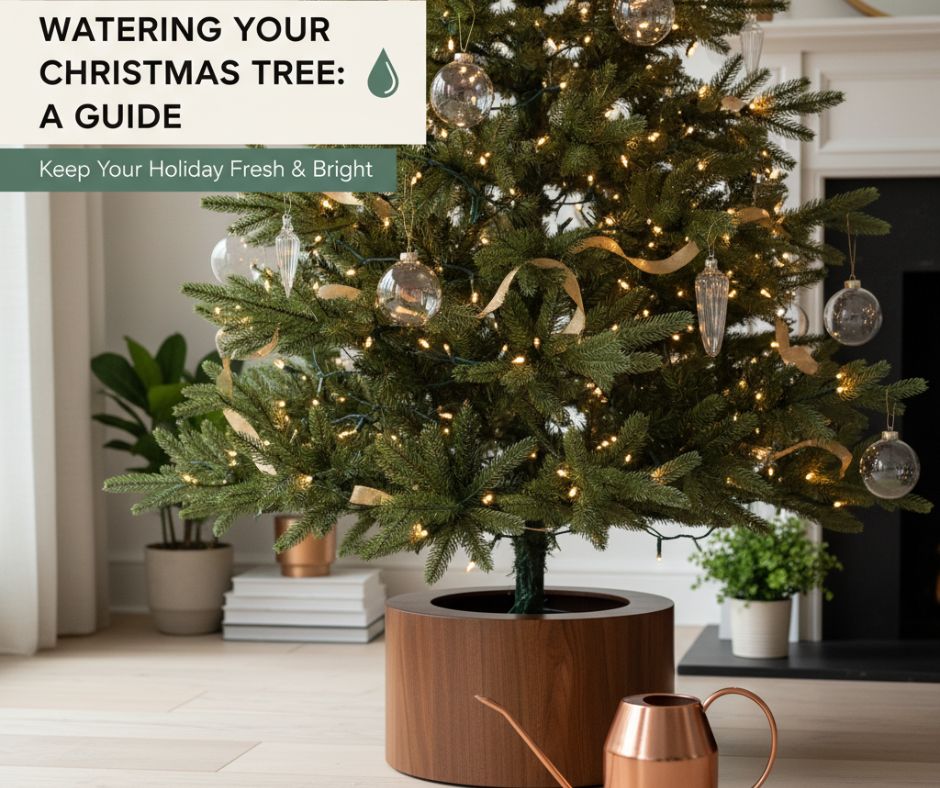During the holiday season, the Christmas tree is a central symbol of warmth, festivity, and tradition in many homes. Whether real or artificial, a well-decorated Christmas tree brings joy and ambiance. However, real Christmas trees require special care to maintain their freshness, beauty, and safety throughout the season. One of the most important aspects of this care is watering the tree properly.
This article delves into why watering a real Christmas tree is essential, how to do it effectively, the science behind water uptake in trees, and safety considerations, ensuring your tree stays vibrant and your celebrations remain safe.
The Basics: Why Do Real Christmas Trees Need Water?
After a Christmas tree is cut from the farm or lot, it is essentially severed from its natural water source—the ground. Without water, the tree quickly begins to dry out, causing needles to shed, branches to become brittle, and the overall aesthetic to deteriorate.
-
Hydration Keeps Needles Fresh: Trees are living plants that rely on water to keep needles green and healthy. When properly watered, trees can maintain needle retention throughout the holiday period.
-
Reduces Needle Drop: A dehydrated tree begins to lose needles, resulting in a mess and a less appealing display.
-
Maintains Scent and Appearance: Water keeps the tree’s pores open, maintaining the fragrant natural pine scent and a fresh appearance.
-
Prevents Fire Hazards: Dry trees are highly flammable and can ignite rapidly, especially with electrical lights or indoor heating. Keeping the tree hydrated significantly reduces fire risks.
In short, watering is the single most effective way to prolong the life and safety of a real Christmas tree.
How Does a Cut Tree Absorb Water?
A living tree absorbs water through its roots via capillary action but once cut, it loses this mechanism. Nevertheless, the cut end of the trunk can still draw water, much like a bouquet of flowers placed in a vase.
-
Water travels through the xylem vessels in the trunk, supplying moisture to the needles.
-
However, over time, a layer of sap or resin seals the cut end, blocking water absorption.
-
To maintain uptake, it’s essential to make a fresh cut on the bottom of the trunk just before placing it in the water stand. A 1/2 inch to 1 inch cut exposes fresh wood and eases water absorption.
How Much Water Does a Christmas Tree Need?
Christmas trees can be surprisingly thirsty:
-
A general rule is to provide about 1 quart of water per inch of the trunk diameter per day.
-
For example, a 3-inch diameter trunk could absorb roughly 3 quarts (about 3 liters) of water daily.
-
Newer trees tend to absorb more water initially—sometimes gallons in the first 24-48 hours.
-
It’s vital to keep the water reservoir full at all times and never let the water drop below the cut end, as this can cause the sap to reseal.
How to Properly Water a Christmas Tree
To water your tree effectively:
-
Choose a tree stand with a water reservoir that can hold at least 1 gallon (4 liters) of water.
-
Make a fresh cut on the trunk base, straight across (not angled), right before placing the tree in the stand.
-
Place the trunk immediately in water upon bringing it home.
-
Fill the reservoir daily with fresh tap water. Avoid additives like sugar, aspirin, bleach, or floral preservatives—plain water works best.
-
Monitor water level closely, checking at least once a day to ensure the base remains submerged.
-
Keep the tree away from heat sources like radiators or fireplaces to reduce water loss through drying.
Common Myths About Watering Christmas Trees
-
Myth: Adding sugar or aspirin to the water helps the tree.
Science shows that plain water is sufficient. Additives have not been proven to extend freshness and can sometimes encourage bacterial growth. -
Myth: You don’t need to water a tree for the first few days.
Trees absorb the most water during the first 48 hours; withholding water leads to rapid dehydration. -
Myth: Cutting the bottom of the tree is unnecessary.
The cut end seals quickly after harvesting. Freshly cutting the base improves water absorption significantly.
Safety Considerations: The Role of Water in Preventing Fires
Dry Christmas trees are a serious fire hazard:
-
According to fire safety studies, a dry Christmas tree ignites faster and burns hotter than a well-watered tree.
-
The National Institute of Standards and Technology (NIST) demonstrated that a watered tree takes much longer to catch fire in case of electrical shorts or open flames.
-
Keeping your tree hydrated is an important fire prevention step during the holiday season, making watering not only a care routine but a safety imperative.
Troubleshooting: What If My Tree Isn’t Drinking Water?
Sometimes a tree may fail to absorb water properly:
-
Ensure the base is freshly cut; dry sap can seal vessels and prevent uptake.
-
Check the size of the water reservoir—too small can restrict water supply.
-
Avoid placing the tree near heating vents, as this accelerates drying.
-
If the tree has been cut long before purchase, hydration may be limited.
If problems persist, consider trimming a thin slice off the bottom again to re-open the water path.
Read More: Which Countries Don’t Celebrate Christmas? A Global Perspective on Festive Traditions
Conclusion
Watering a Christmas tree is essential to maintain its freshness, beauty, and—most importantly—safety throughout the holiday season. Proper hydration helps retain needles, enhances scent, reduces mess, and significantly lowers fire risks.
Simple daily watering routines combined with fresh cuts and correct placement ensure a vibrant tree that can be enjoyed throughout the festive period. Ultimately, the care and attention you give to your Christmas tree transform it into a joyful centerpiece for your holiday celebrations.



Add a Comment